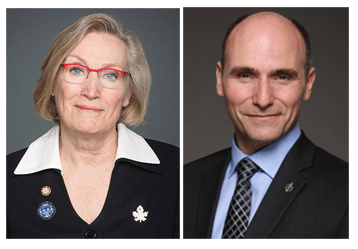
EDMONTON, AB and OTTAWA, ON and MONTREAL, May 28, 2022 – Health organizations are calling on Senators and Members of Parliament to address the weaknesses in the Tobacco and Vaping Products Act (TVPA) which they passed in the spring of 2018. “Four years later, the flaws in the law and the weaknesses in the strategy it supported are increasingly apparent,” said Cynthia Callard, executive director of Physicians for a Smoke-Free Canada. “These structural problems cannot be fixed without Parliament. We urge Senators and Members to give priority to strengthening this important public health tool.”
When the Tobacco and Vaping Products Act was given Royal Assent on May 23, 2018, it reflected the government’s choice at that time to adopt light-touch regulations on vaping products and to make no significant improvements to tobacco regulation other than plain packaging. On the same week that this bill became law, Health Canada announced ‘Canada’s Tobacco Strategy‘ which set the objective of reaching less than 5% tobacco use by 2035.
“It was very quickly apparent that much stronger controls on the manufacturers of tobacco and nicotine products were needed to achieve the 5 by 35 target,” said Flory Doucas, co-director of the Quebec Coalition for Tobacco Control. “The changes to the vaping market triggered by the TVPA resulted in over 400,000 young Canadians being introduced to nicotine use, with many becoming addicted. Meanwhile, federal surveys suggest there was no discernable increase in the number of Canadian smokers who successfully quit.” Although the smoking rate has continued to decline, analysis shows this is largely because more smokers die than are replaced by new smokers.
“To its credit, when the dramatic rise in youth vaping became apparent, Health Canada adjusted its approach,” said Les Hagen of Action on Smoking & Health. “The department pivoted towards developing regulations to restrict the marketing activities that were driving youth vaping, but this process is inherently slow. Key measures are months or years from being in place, and many needed reforms cannot be done by regulation. The government needs to align the regulation of tobacco and vaping products to the greatest extent possible while providing smokers with access to nicotine replacement products.”
“Health Canada is struggling to make this law work,” he said. The department reports that it has been unable to achieve satisfactory levels of compliance with the law, and during some inspections a majority of suppliers have been found non-compliant. However it appears that no charges have been laid to date despite thousands of violations across Canada.
“The department’s failure to file a review with Parliament this week, despite their statutory obligation to do so, is symptomatic of the challenges it is facing in getting the job done,” said Ms. Callard. In its overdue review, Health Canada has indicated it will limit its scope to youth vaping, in lieu of the more comprehensive analysis that was expected. “Health Canada’s inability to report on its experience regulating tobacco products and the use of vaping products by adults creates a pressing need for Parliament to initiate a thorough and expeditious review.”
The group is urging the Senate and House of Commons committees which were involved in adopting this legislation to hold hearings on this issue when Parliament returns in September. “Parliamentary action is needed on two fronts,” said Ms. Doucas. “Both the problems caused by the law adopted in 2018 and the pressing problems ignored or overlooked to date.”
Health groups are also asking parliamentarians to be mindful of the commercial interests behind the campaigns against restrictions on the marketing of tobacco and nicotine products. “The tobacco industry has used the same playbook for decades, and vaping manufacturers are following suit” said Ms. Doucas. “Just as they previously created and funded puppet groups to oppose advertising bans, taxes and smoking restrictions, they are now behind pro-vaping protest movements.”
The international and Canadian connections between nicotine product manufacturers and organizations like Rights4Vapers have been documented and exposed. The Framework Convention on Tobacco Control imposes a responsibility on Canadian governments (including parliamentarians) to protect public health from these vested interests.
For further information:
Cynthia Callard, Executive Director, Physicians for a Smoke-Free Canada, ccallard@smoke-free.ca, 613 600 5794;
Les Hagen, Executive Director, Action on Smoking & Health, hagen@ash.ca, (780) 919-554;
Flory Doucas, Co-Director, Quebec Tobacco Control Coalition, fdoucas@cqct.qc.ca, 514-515-6780











